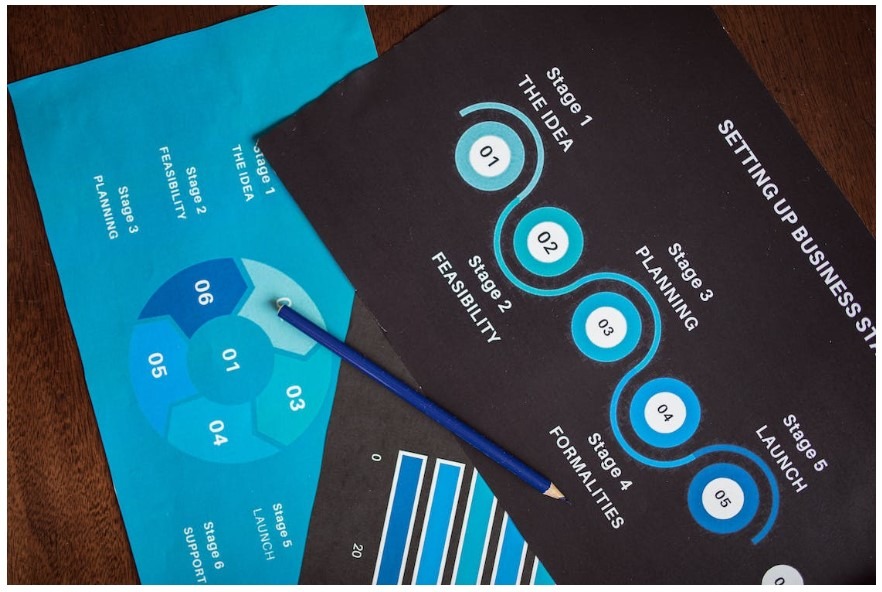SaaS companies are typically based on recurring revenue models, meaning that the money they get in from different customers doesn’t come in all at once. Instead, it comes in little by little over time as those customers pay for their subscription or use of a service. That can make accounting for revenue very different for SaaS companies than it is for other types of businesses.
In order to provide financial information that more accurately reflects how their business works, SaaS companies will often adopt certain metrics and practices to track and report revenue so that the values reported do double duty. First, they show investors what these companies are really getting paid; and second, they show prospective investors a better picture of whether or not these businesses are actually financially healthy.
What is SaaS Accounting?
Software as a Service accounting refers to the process of tracking revenue and expenses associated with SaaS business models. SaaS companies have different accounting periods than traditional software companies, and they also have different methods for recognizing revenue and expenses.
The main difference is that SaaS companies recognize revenue over time instead of all at once. When you sell a perpetual license, you recognize the total amount of money that was collected in one transaction as revenue. With SaaS, however, you do not receive the full amount upfront. Instead, you receive small payments from your customers every month until their subscription ends.
For example, if you offer a $99 per month subscription service, the customer will pay $99 each month until their subscription ends. At the end of their subscription term, they will no longer be required to pay any more monthly fees, and they will no longer have access to your product or service.
If they decide to renew their subscription at any point in the future (which most customers do), they would again begin paying $99 per month until their next renewal term ends (which could be as little as 30 days).
Why is SaaS Accounting Important?
For some businesses, accounting for revenue generated by SaaS subscriptions can be difficult because there are so many variables involved in each transaction. For example:
- The price of your product will vary depending on which features you use within your subscription plan.
- Your billing cycle may vary based on the length of the subscription plan purchased by your customer.
- Your customer may stop paying before their contract expires (known as churn) or extend their contract without canceling it (known as retention).
- The amount of time between when the customer purchases your product and when they start using it.
Common SaaS Accounting Challenges
The accounting rules for recognizing revenues and expenses provided by the Financial Accounting Standards Board (FASB) and International Accounting Standards Board (IASB) are robust, but they do not cover the unique aspects of software-as-a-service (SaaS). As a result, software providers face additional reporting requirements that can cause significant financial reporting issues, as well as risk noncompliance with state and federal tax laws.
Although customer lifetime value calculations are complex for finance teams, they are necessary to predict future revenue streams.
Let’s consider three areas where SaaS accounting presents particular challenges:
1. Collecting Sales Tax
Managing sales tax can be a significant challenge for businesses that sell services online. These companies often have remote workforces and operations that encompass multiple states. While sales tax is generally not required on software, some states do tax software in some or all service categories. If a business has nexus—an office location or employees—in a state, it is responsible for collecting sales tax from customers in that state.
2. When to Recognize Revenue
The most significant challenge for SaaS companies is recognizing revenue. Because the customer never obtains control of the good or service, SaaS providers must use a different model than that used by most other businesses. In most cases, according to FASB rules, SaaS providers must recognize much of their revenue over the contract term rather than at the time of sale.
3. How to Manage Expenses
SaaS providers must spread many of their expenses across the contract term or estimated customer relationship lifetime. Knowing which expenses businesses must amortize and which may be recognized immediately is essential. For example, SaaS providers must amortize the cost of software licenses over a period of time, but they can recognize the cost of sales commissions immediately.
What is Revenue Recognition Principle?
The revenue recognition principle is one of the fundamental principles of accounting. It stipulates that revenue must be recognized when all of the following criteria are met:
- An arrangement exists between the company and a customer or client.
- The company has transferred control over goods or services to the customer or client.
- The price is fixed or determinable, meaning it can be calculated with certainty (without any adjustments). This criterion is relevant for variable payment arrangements where it’s impossible to determine whether there will be additional payments in future periods.
For example, a customer has signed an annual contract of $12,000 at $1,000 per month. Revenue from this contract can be recognized only when all the services specified in the contract are delivered. So in this example, $1,000 of revenue can be recognized each month for as long as the contract lasts.
Key Concepts and Metrics in Revenue Recognition
Unbilled Revenue
Unbilled revenue refers to revenue that has been recognized but not yet billed due to billing schedules or certain milestones noted in contracts. Such revenue is treated as an asset until the customer is able to be billed.
Deferred Revenue
Deferred revenue is the money you have billed but can’t recognize as revenue yet because the product or service has not been provided. It is also known as unearned revenue, and it is a liability because, in theory, you could fail to perform and forego collection or have an obligation to return funds to the customer.
Steps to SaaS Accounting Revenue Recognition
In December 2016, the FASB and International Accounting Standards Board introduced a new revenue recognition standard that significantly changed the way companies recognize revenue. The new standard consists of the following five steps:
1. Identify the Contract with a Customer
The first step in establishing a new contract with a customer is to outline the criteria for that agreement. It can be written, verbal, or implied through your company’s terms and conditions.
2. Identify the Separate Performance Obligations in the Contract
The next step describes your obligations under the contract. An obligation is either a performance obligation or a term obligation. A performance obligation refers to a separate service that benefits the customer on its own or in conjunction with other services you provide. On the other hand, the term obligation refers to any other promise in the contract.
3. Determine the Transaction Price
The transaction price is the amount of money you expect to earn for providing your full service.
4. Allocate the Transaction Price
To set the price for each product or service, you will have to estimate the standalone selling price. Essentially this is what a customer agrees to pay for them.
5. Recognize Revenue When or As the Entity Satisfies a Performance Obligation
A business recognizes revenue from an arrangement as each performance obligation is met.
Six Methods of Calculating Revenue Recognition
1. Accrual Method
The accrual method is the most common way of accounting for revenue in SaaS companies because it closely resembles the way that most companies account for their products or services sold on credit terms (such as net 30 days). The main difference between this method and other industries is that with SaaS products, you don’t get paid until after you deliver your service or product — and that could be months or years later!
In this method, the company initially records prepayments as prepaid expenses, postponing their recognition as expenses until after the products or services have been delivered.
2. Appreciation Method
By using the appreciation method, a SaaS company is able to depreciate its assets over a shorter period and thereby reduce gains recognized from selling a product at its appreciated value.
3. Percentage-of-completion Method
Companies that take years to complete a project still need to demonstrate to their shareholders that they generate revenue. Under the percentage-of-completion method of revenue recognition, companies recognize their revenues over time as they satisfy two conditions: the company has a long-term contract with its customer, and it can estimate the percentage of the project completed and future revenues and costs.
4. Proportional Performance
A performance consists of more than one act. Companies recognize revenues based on the proportionate completion of all acts in a contract or plan, not just those performed during a period.
5. Sales-basis Method
Businesses recognize revenue when they receive cash or its equivalent in services, regardless of whether the sale occurs on credit or by means of an exchange of goods or other assets. For example, if a business sold an annual subscription to an online magazine for $100, it would recognize $10 as monthly revenue. If a business failed to provide the product or service it promised, it would refund the customer an appropriate percentage of the subscription price.
6. Completed Contract Method
The completed-contract method is very similar to the percentage-of-completion method, except it requires observable evidence of the revenue being earned. Revenues are often easy to identify under this method when there are multiple elements to the contract. The precision of this method requires the customer to pay in advance, which can be problematic.
The goal of the completed contract method of revenue recognition is for a business to recognize revenue when a good or service has been delivered because there is no future obligation for additional services. This is a favorable complete and performing asset compared to incomplete because there is no uncertainty regarding the company’s ability to collect.
Examples of how a SaaS Company Should Be Accounting for Revenue
Example 1: XYZ VPN Company
In this example, let’s talk about a subscription SaaS company. Suppose they are charging $20 a month to provide VPN services. Let’s assume they are also charging a $40 one-time fee for another service that’s related to VPN.
The company will recognize a $40 startup fee during the initial registration process. However, it will charge a recurring subscription fee of $20 per month and recognize that amount when earned.
XYZ VPN company will recognize the $20 of revenue at the end of the first month and defer recognition of the remaining $220 until it is recognized over time.
Example 2: ABC Digital Marketing Company
In this example, let’s talk about a digital marketing agency that has agreed to sell three of its services. The services are as follows:
- Monthly SEO – $500
- Brand Logo Design – $1,000
- Digital Ads – $2,000
ABC Digital Marketing Company will debit its account receivable with $3,500 and credit each service as deferred revenue as follows:
| Account | Debit | Credit |
| Account Receivable | $3,500 | |
| Deferred Revenue – Monthly SEO | $500 | |
| Deferred Revenue – Brand Logo Design | $1,000 | |
| Deferred Revenue – Digital Ads | $2,000 |
The agency delivered its monthly SEO services in the first month and updated its ledger immediately with this entry:
| Account | Debit | Credit |
| Deferred Revenue – Monthly SEO | $500 | |
| Earned Revenue – Monthly SEO | $500 |
The agency delivered the brand logo design in the second month and updated its ledger immediately with this entry:
| Account | Debit | Credit |
| Deferred Revenue – Brand Logo Design | $1,000 | |
| Earned Revenue – Brand Logo Design | $1,000 |
The agency delivered digital ads in the third month and updated its ledger immediately with this entry:
| Account | Debit | Credit |
| Deferred Revenue – Digital Ads | $2,000 | |
| Earned Revenue – Digital Ads | $2,000 |
Takeaway
Recognizing revenue when it should be recognized and when it shouldn’t be recognized is hugely important for any business, especially a business that follows the subscription model of selling its product.
A SaaS company that fails to recognize the correct amount of revenue will ultimately lead to problems with the Internal Revenue Service (IRS), which may seek to collect penalties on the failure to classify revenue correctly as well as for filing taxes late or at all. It also opens up the business for class-action lawsuits filed by customers who may have been shorted on their payments or possibly never paid.




